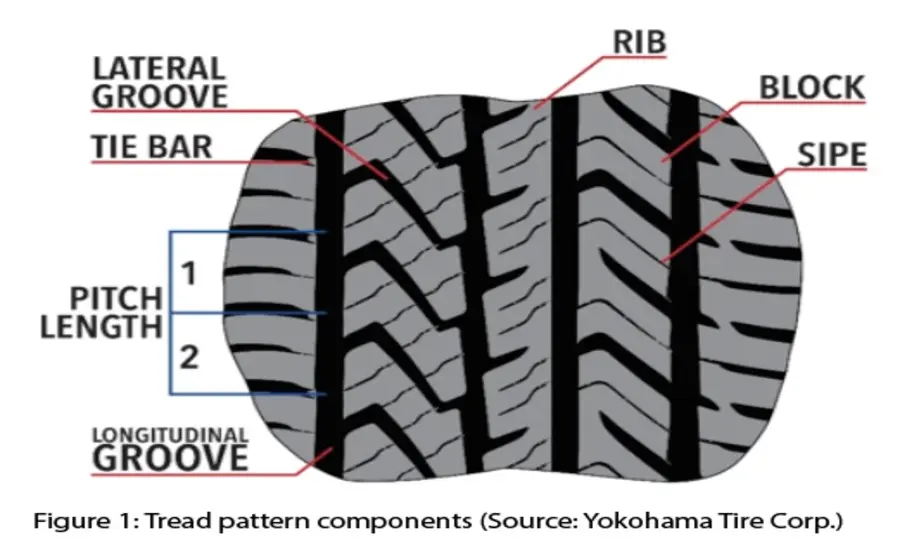Tire Tread Patterns Explained: All You Need to Know
When you’re driving, the only contact your vehicle has with the road is through tires. These rubber companions play a massive role in your car’s handling, safety, and performance. Tire tread pattern is the most crucial component as it influences how your vehicle grips the road. It impacts your vehicle’s grip on wet or slippery conditions. In this post, we will tell you everything you need to know about tread patterns.
What is a Tread Pattern?
Tread pattern refers to the arrangement of grooves, blocks, and channels on the surface of a tyre. These designs are specifically engineered to perform certain functions, such as water dispersion and grip on different surfaces. Each tread pattern is tailored to particular driving conditions or preferences. Choosing the right one is crucial for optimal performance and safety especially while driving on wet roads.
Main Types of Tyre Tread Patterns
The following are some primary types of tread patterns. Let’s explore them to understand their specific benefits.
Symmetrical Tread Patterns
These patterns are the most common and consist of the same design on both sides of the tyre. The grooves and channels are identical across the surface providing consistent performance. They are long-lasting and quieter. It makes them ideal for everyday driving in urban areas. They also offer flexibility in tyre rotation, which can extend their life. They are best for regular passenger cars, commuting, and drivers looking for longevity and cost-efficiency.
Asymmetrical Tread Patterns
These tyres feature different patterns on the inner and outer sides. The inner side is designed to disperse water and maintain traction on wet roads. On the other hand, the outer side offers more grip for cornering and stability on dry surfaces. They are perfect for high-performance vehicles because they provide excellent grip in both dry and wet conditions.
They are designed to improve handling at higher speeds. Furthermore, they are ideal for sports cars, performance vehicles, and drivers who need superior handling and versatility in different conditions.
Directional Tread Patterns
These tyres have a V-shaped pattern, which points in one direction. This pattern is specifically designed to optimize water dispersion and reduce the risk of aquaplaning. The V-pattern pushes water to the sides, offering high traction in wet conditions. Directional tyres are excellent for wet conditions, as they prevent hydroplaning and improve stability. They also provide good traction in snowy conditions, making them ideal in cold weather. They are a perfect fit for wet or snowy driving conditions and high-performance vehicles.
Importance of Tread Pattern
The following are the main points that highlight the importance of tread patterns.
- They enhance grip and traction by channeling water, mud, and debris away from the surface.
- They improve handling, braking performance, and fuel efficiency.
- Tread patterns help reduce the risk of hydroplaning by dispersing water effectively on wet roads.
Final Thoughts
Now you know everything about tread patterns. If you notice it’s worn, immediately replace the tyres. Search “car tyre shop near me“ on Google and explore some top results to buy new ones. Make sure you always opt for branded tyres as they wear evenly and offer maximum grip.






